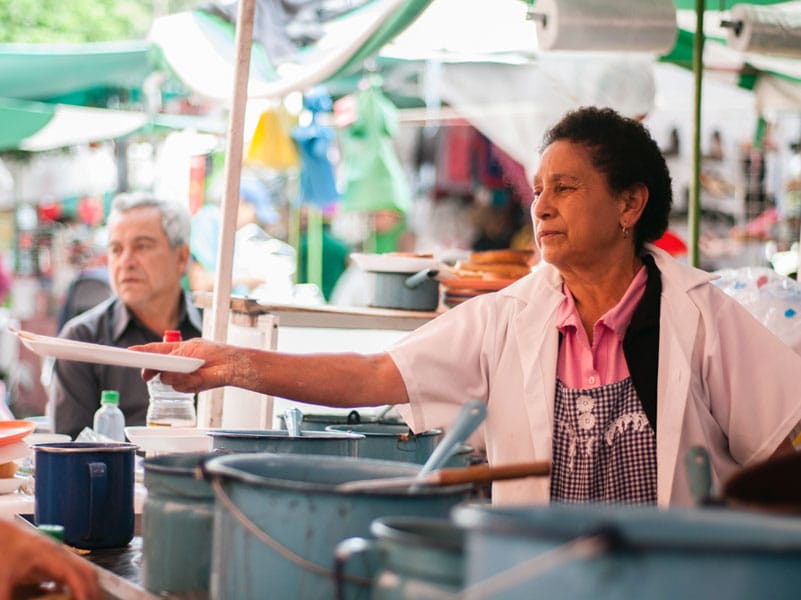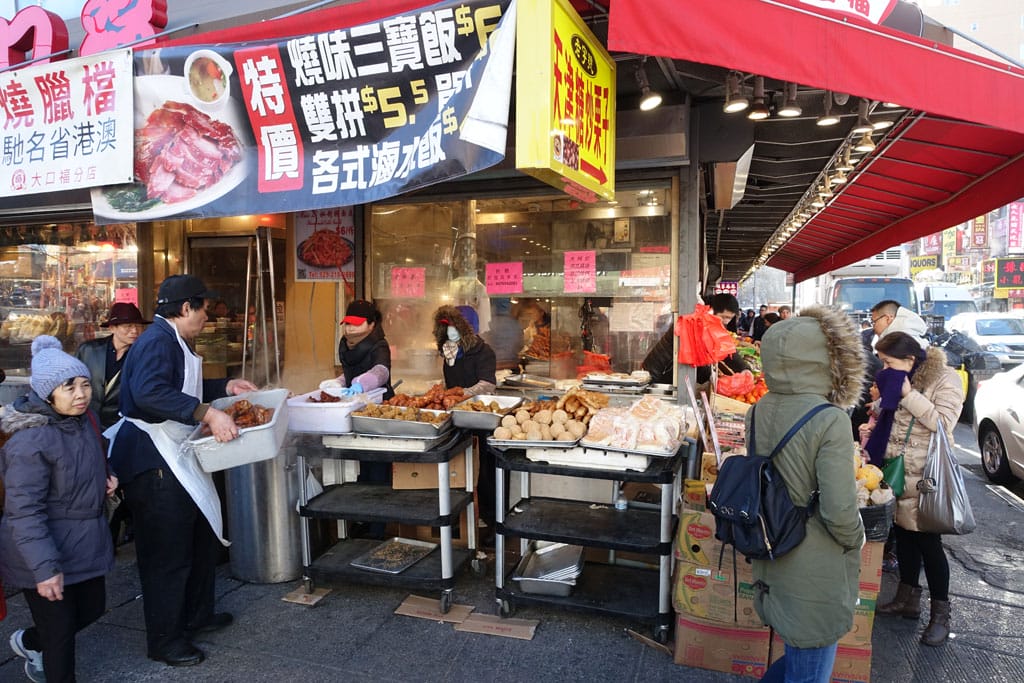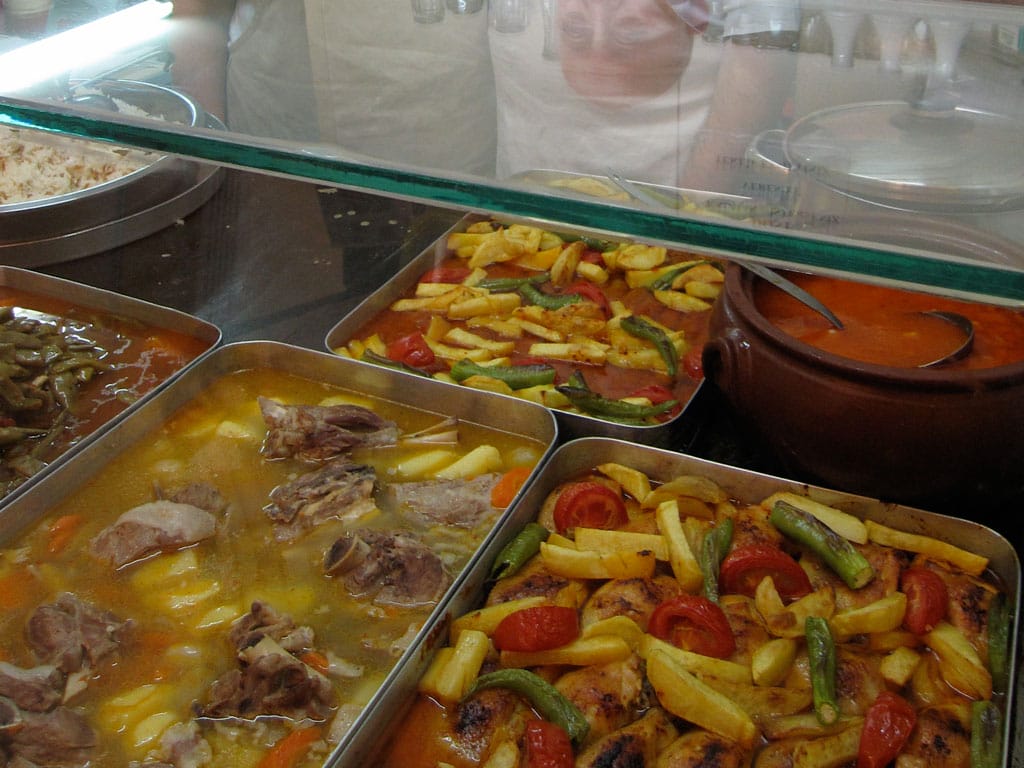Update: This spot is sadly no longer open.
A particularly eye-catching landmark in Lisbon’s Alfama district is the Casa dos Bicos (“House of the Spikes”), a 16th-century palace – once home to the Portuguese viceroy of India, and now housing the José Saramago Foundation – that has a bizarre façade of spiked stones and eclectic doors and windows. Just next to it is Reviravolta, a modest neighborhood tasca that serves up a dish with similarly iconic status: cozido a Portuguesa.
One of the most traditional Portuguese meals, cozido has humble origins; first invented in the interior Beira region, it was a dish to use up all the week’s lunch leftovers. It consists of a mixture of several kinds of meat, including chicken, pork ribs, pork belly, pig’s ear, beef shank and assorted offal, complemented by different smoked sausages: chouriço, fat and sweet paprika, blood sausage and farinheira – the latter a Jewish invention of wheat flour, paprika and pepper, nowadays mixed with pork fat. Cozido is accompanied by boiled vegetables such as beans, potatoes, cabbage, turnip greens and rice. All of that, on just one plate.
This winter dish is considered a national tradition, but there are regional variations in cooking styles; for instance, cozido das Furnas is prepared by burying a huge pot in the ground close to a geyser in the volcanic Azores Islands, the Portuguese archipelago located in the middle of the Atlantic Ocean.  Cozido is always mixed with an aromatic broth, made from its boiled meats and sometimes combined with beans and mint, bread, rice or pasta.
Cozido is always mixed with an aromatic broth, made from its boiled meats and sometimes combined with beans and mint, bread, rice or pasta.
The menu at Reviravolta (meaning “overturn” in Portuguese), which opened in the 1990s and is a stone’s throw from the river Tejo, includes regular daily specials as well as several staples with seasonal variations. Grilled scabbard or salmon with boiled green beans and potatoes, mackerel, sardines and carne alentejana – a bizarre but inspired mix of pork meat and clams – are typical dishes here. But Sunday is cozido day and for Reviravolta one of the most crowded of the week. Although the dish can be found in many downtown restaurants, Reviravolta is well known for its abundant portions and lively Sunday atmosphere that evokes the spirit of traditional Lisbon tascas.
This canteen is not a fancy place. With its paper tablecloths, hams hanging from the ceiling and the typically tiled walls, it maintains a regular base of customers; among them are employees at the nearby Finance Ministry offices, but most are workers from the increasingly numerous construction sites surrounding the nearby square. Many buildings in the area are being renovated by private investors profiting from the recent tourism boom here, but there is also speculative anticipation of the new cruise terminal that is being built at the end of the road.
Seven years ago, after working as a pub manager in London, head waiter Fernando Reis decided to come back to Lisbon because he was missing Portuguese life – and food. Nowadays, standing outside Reviravolta’s door, he watches the changes in the city with a mixture of optimism and concern. Campo das Cebolas, the nearby former 19th-century market square, now has eclectic surroundings composed of docklands and historical residential buildings. The palm tree-lined square itself, once a thriving public space that is now a popular parking spot, is currently undergoing renovation, with more and more tourists wandering past, especially around lunchtime.
The palm tree-lined square itself, once a thriving public space that is now a popular parking spot, is currently undergoing renovation, with more and more tourists wandering past, especially around lunchtime.
“When the new terminal is finished [at the end of 2016], an enormous flow of tourists will cross this area, and everything will change,” says Fernando. The project has been contested by local residents, who are concerned about its consequences for social sustainability and the neighborhood’s heritage.
Despite this ambiguous view of the future, Fernando is certain that Reviravolta will keep its authenticity intact. And, unlike at other restaurants in the square, there is no intention of increasing prices: The bill for a plentiful portion of cozido and a glass of house wine is still just €6.50.
 July 3, 2015 Señora Ema
July 3, 2015 Señora Ema
Update: This spot is sadly no longer open.
The tianguis, or street market, has been […] Posted in Mexico City March 9, 2017 Queens
March 9, 2017 Queens
Editor's Note: This piece marks the beginning of CB's new section devoted to the food of […] Posted in Queens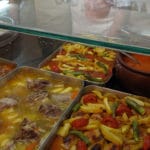 January 13, 2017 Doyuran Lokantası and Boris’in Yeri
January 13, 2017 Doyuran Lokantası and Boris’in Yeri
We usually steer clear of the touristy Old City district of Kumkapı, where you are more […] Posted in Istanbul
Published on January 29, 2016
Related stories
July 3, 2015
Mexico CityUpdate: This spot is sadly no longer open. The tianguis, or street market, has been an essential part of Mexican culture since pre-Hispanic times. In Mexico City, every neighborhood has at least one weekly tianguis, most selling produce, fish, meat and household goods, so families can buy all they need for the week in a…
Meet some real American heroes on our newest Queens walk.
March 9, 2017
QueensEditor's Note: This piece marks the beginning of CB's new section devoted to the food of Queens, New York, and the people making it. We plan to file regular dispatches from the borough of global eats. For many visitors to New York, the first sight of Queens comes from above, during the approach to JFK…
January 13, 2017
IstanbulWe usually steer clear of the touristy Old City district of Kumkapı, where you are more likely to be accosted by an aggressive maitre d’ trying to corral you into his overpriced fish restaurant than to find something simple, tasty and reasonably priced to eat. Sadly, in order to beat the competition next door, most…







































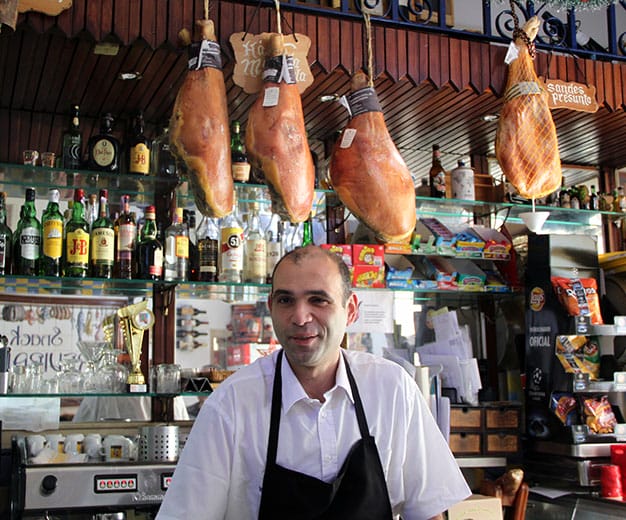
 Cozido is always mixed with an aromatic broth, made from its boiled meats and sometimes combined with beans and mint, bread, rice or pasta.
Cozido is always mixed with an aromatic broth, made from its boiled meats and sometimes combined with beans and mint, bread, rice or pasta. The palm tree-lined square itself, once a thriving public space that is now a popular parking spot, is currently undergoing renovation, with more and more tourists wandering past, especially around lunchtime.
The palm tree-lined square itself, once a thriving public space that is now a popular parking spot, is currently undergoing renovation, with more and more tourists wandering past, especially around lunchtime.


